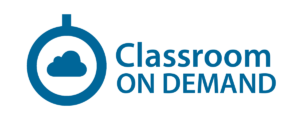Tableau Desktop Level 2
Tableau Desktop Level 1: IntermediateOverviewTableau has emerged as one of the most popular Business Intelligence solutions in recent times, thanks to its powerful and interactive data visualization capabilities. This book will empower you to become a master in Tableau by exploiting the many new features introduced in Tableau 10.0. You will embark on this exciting journey by getting to know the valuable methods of utilizing advanced calculations to solve complex problems. These techniques include creative use of different types of calculations such as row-level, aggregate-level, and more. You will discover how almost any data visualization challenge can be met in Tableau by getting a proper understanding of the tool’s inner workings and creatively exploring possibilities. You’ll be armed with an arsenal of advanced chart types and techniques to enable you to efficiently and engagingly present information to a variety of audiences through the use of clear, efficient, and engaging dashboards. Explanations and examples of efficient and inefficient visualization techniques, well-designed and poorly designed dashboards, and compromise options when Tableau consumers will not embrace data visualization will build on your understanding of Tableau and how to use it efficiently. By the end of the book, you will be equipped with all the information you need to create effective dashboards and data visualization solutions using Tableau. Features Features • Arm yourself with an arsenal of advanced chart types and geocoding to efficiently and engagingly present information • Map a grid over a network node diagram and use that grid to demonstrate loads, processing time, and more in Tableau • Integrate R with Tableau by utilizing R functions, libraries, and saved models Learning • Create a worksheet that can display the current balance for any given period in time • Recreate a star schema from in a data warehouse in Tableau • Combine level of detail calculations with table calculations, sets, and parameters • Create custom polygons to build filled maps for area codes in the USA • Visualize data using a set of analytical and advanced charting techniques • Know when to use Tableau instead of PowerPoint • Build a dashboard and export it to PowerPoint Version This course will be taught with the Version 10 course materials and software. Users of Tableau Version 9 will feel comfortable in the class because the user interface is very similar between versions 9 and 10. Instructors will also be able to highlight new features and differences between the two versions, as appropriate. Audience This two day course will provide you with the skills that will help you be a Tableau power user. It is designed for individuals with experience with the fundamental concepts of Tableau who want to take their skills to the next level. Prerequisites Before attending this course, students should have experience using Microsoft Excel and have taken the Tableau Level 1 course. Certification Options This class, when combined with our Tableau Level 1 class, offer a strong foundation in preparation for the Tableau Qualified Associate Exam. Exam prep guide is shown here: mkt.tableau.com/files/Desktop-9-QA-Prep-Guide.pdf Course Outline 1: Getting Up to Speed – a Review of the Basics The Tableau universe Understanding the Tableau interface and basic terminology Worksheet and dashboard creation Connecting Tableau to your data Measure Names and Measure Values Three essential Tableau concepts Summary 2: All about Data – Getting Your Data Ready Understanding Tableau's data-handling engine Data-mining and knowledge-discovery process models CRISP-DM Focusing on data preparation Summary 3: All about Data – Joins, Blends, and Data Structures About joins Complex joins Data blending Data structures Summary 4: All about Data – Data Densification, Cubes, and Big Data About data densification Working with cubes Tableau and big data Summary 5: Table Calculations A definition and two questions What is the function? How is the function applied? Summary 6: Beyond the Basic Chart Types Improving popular visualizations Custom background images Summary 7: Mapping Extending Tableau mapping capabilities without leaving Tableau Extending Tableau mapping with other technology Summary 8: Tableau for Presentations Getting the best images out of Tableau From Tableau to PowerPoint Embedding Tableau in PowerPoint Animating Tableau Story Points dashboards for presentations Summary 9: Visualization Best Practices and Dashboard Design Visualization design theory Dashboard design Sheet selection Summary 10: Improving Performance Understand the Performance Recording dashboard Hardware and on-the-fly techniques Single Data Source > Joining > Blending Working efficiently with data sources Intelligent extracts Using filters wisely Efficient calculations Additional performance considerations Summary 11: Interacting with Tableau Server Tableau file types Tableau Server architecture Tableau Server revision history Tableau Server web authoring environment User filters Accessing the Tableau Server Performance Recording dashboard Summary |

